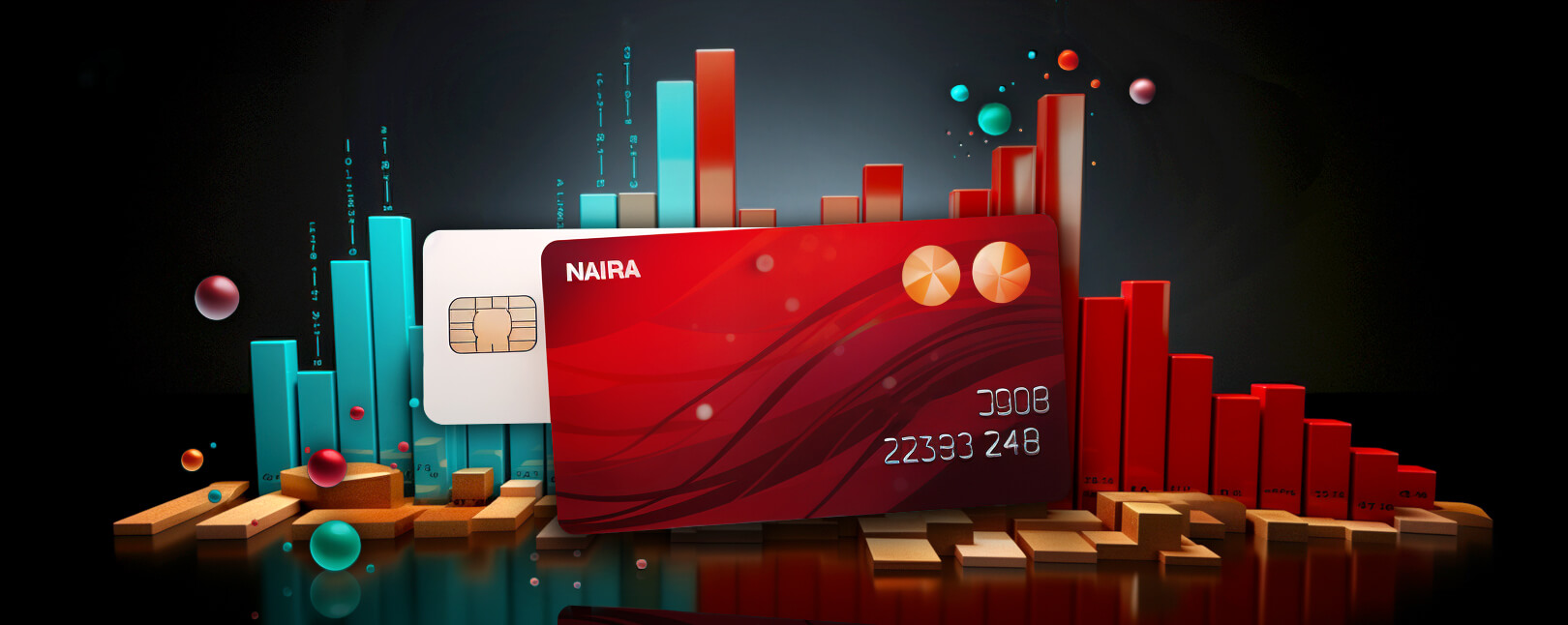How Does the Credit Card Transaction Process Work? What are the Steps & What Can Go Wrong?
Making a credit card purchase seems like a pretty simple exercise. You swipe the card, and the transaction’s done. Right?
Well, if we look behind the scenes, we see that the credit card transaction process is far more complex than it looks at first glance.’
Money doesn’t simply appear in the merchant’s account when a consumer swipes, inserts, or taps a payment card to make a purchase. Each transaction passes through multiple phases involving several different parties before the seller gets the funds.
Even then, merchants must remain aware that they could still forfeit that revenue through a return or chargeback. In some cases, this could happen up to six months or more past the date of the original transaction.
Recommended reading
The Participants in a Credit Card Transaction
Before diving into the details of the credit card transaction process, it helps to know all the players and how they are involved. Below, we outline a few key parties involved in every credit card transaction:
Five Steps of the Credit Card Transaction Process
The procedure can be convoluted in certain cases. That said, the typical credit card transaction process—from beginning to end—essentially breaks down into five key stages: authorizing, authenticating, batching, clearing, and funding.
Stage 1 | Authorization
The first stage of the credit card transaction lifecycle is authorization, and it normally lasts just a few seconds. When the cardholder initiates the purchase, the merchant requests electronic authorization from the issuing bank. Here, the merchant is asking the bank if the card number is valid and whether funds/credit associated with the card are available for the transaction.
Even this simple task is more involved than it seems. The authorization request must travel from the merchant to the processor via a payment gateway, then on to the card network, which forwards the request to the issuer. Once the issuer grants authorization, the response travels back through the card network and the acquirer before the merchant has clearance to accept the transaction. All this happens in near-real time.
It’s important to note that the authorization phase doesn’t actually finalize the credit card transaction process. This stage merely confirms the card is active, has not been reported stolen, and that there are resources to cover the purchase. Having a transaction authorized by the bank doesn’t inherently mean the purchase is authorized by the cardholder; “authorized” transactions can still be cases of fraud.
Stage 2 | Authentication
Alongside the authorization process, the merchant must verify that the buyer on the other end of the transaction is, in fact, the authorized cardholder. The cardholder’s bank confirms that the account is active and has funds available, but authentication is the merchant’s responsibility.
Like authorization, this process typically only takes a few seconds. That said, it is still an important stage in the credit card transaction process.
The merchant can deploy several technologies to verify the buyer. They may use Address Verification Service (AVS) to compare the address provided against that on file with the bank. They may also validate the CVV number on the card, deploy geolocation, or any variety of different fraud detection tools.
If the merchant can authenticate the transaction, it will be approved. The customer will receive the goods, and their direct interaction with the merchant will end here.
Stage 3 | Batching
Once the issuer has granted authorization, the merchant can complete the purchase. A request for authorization is still not a request for payment, though. The merchant now must send the bank a formal request for funds to cover the transaction.
This is usually not done immediately. Instead, most eCommerce merchants store their authorized transactions in a batch to be transmitted later (typically the end of the business day). The merchant can put an authorization hold in place until submitting the batched transactions.
Once the batch is complete, the merchant sends off all the authorized transactions to the processor for sorting. The processor then forwards them to the acquiring bank.
Stage 4 | Clearing & Settlement
The clearing process is the next point in the credit card transaction lifecycle. After the acquirer (the merchant’s bank) receives the transactions from the processor, things get even more complex.
The acquirer distributes the transactions to the appropriate card networks (Visa, Mastercard, UnionPay, etc.), who in turn distribute the transactions they receive to the appropriate issuing banks. The issuers charge the cardholders’ accounts for the amount of each transaction before routing the payments back through the card networks. Finally, the networks transfer all requested funds to the acquiring bank.
Stage 5 | Funding
Even after all this, the merchant still has not been reimbursed for the card payment. Up to this point, the merchant has completed the purchase and may have already provided the goods and services requested to the customer. However, the actual money is still in transit as part of the credit card transaction life cycle.
Funding is the last phase of the credit card transaction process. This is where the acquirer deposits the funds into the merchant’s account, finally making the money available for the merchant’s use.
As you can see, there are many credit card transaction steps and touchstones. It would be naïve to think it all gets done, free of charge.
As we’ll explore in the next section, every party in the chain charges a small fee for their services. The acquirer, the issuer, and the card network all assess fees, which are typically subtracted from the final amount the merchant receives.
Processing Fees & Costs for Credit Card Transactions
Of course, it costs money to process payments, regardless if a merchant is strictly a brick-and-mortar retailer or operates an eCommerce site. Generally speaking, those credit card transaction fees are structured in one of three ways:
- Flat-rate fees
- Per-transaction fees
- Volume-assessed fees
The amount which a merchant ultimately pays to facilitate a transaction is called the merchant discount rate. Average merchant discount rates range between 2-3%, but they can go as high as 5% of a transaction, depending on the factors at play.
This merchant discount rate is comprised of the following fees:
Interchange Fee
This is a fee paid to the issuing bank by the acquiring bank and acquiring processor. Interchange fees are set and governed by credit card networks. Visa and Mastercard update their rates twice a year based on market fluctuations.
Interchange fees are commonly split into two parts: one portion goes to the issuing bank, while a small percentage is retained by the card network. The rate a merchant ultimately pays is determined based on the following factors:
- Physical presence (or absence) of the credit card
- The payment processor or method used (in-store, online, or mobile)
- The card network
- Card type (debit, reward, gift card, etc.)
- Merchant category
These questions will be considered, then a flat fee will be applied. To illustrate, a merchant may be asked to pay a per-swipe fee of 2.5%, plus an interchange fee of $0.10 per transaction.
Assessments
Rates and fees as determined by the credit card network in accordance with overall transaction volume per month. Assessment amounts are subject to periodic change, depending on market factors.
When tallied with the interchange fee, assessments could account for between 75% and 80% of total card-processing costs.
Markups
Markup fees are often added by acquiring banks and processors. These are in addition to the interchange and assessments fees, and generally rest between 15-30% of the total processing cost.
Markups vary according to processors and merchant pricing models. Some merchants may not have to pay them, while others see significant markups.
Post-Transaction Costs: Fraud & Chargebacks
Chargebacks are the primary tool banks use to resolve credit card payment disputes. When a consumer did not authorize a charge (i.e. the charge was fraudulent), or they’re unhappy with a product or service, they can challenge the charge with their issuing bank. If the bank feels the consumer’s claim is valid, they will initiate a chargeback in order to reverse the payment.
Chargebacks are a common problem. As such, processors and merchant acquirers tack on additional fees to compensate themselves for losses incurred by excessive disputes.
Chargeback fees are typically assessed by the acquirer as a flat fee per chargeback (usually between $20-100 per incident). Chargeback fees add up over time. In fact, they may be so costly that they become unmanageable. When a merchant receives too many disputes or chargebacks per month, they are liable to lose their merchant account altogether.
Credit Card Transaction Declines
If a credit card is declined, it can be embarrassing for the cardholder. It also costs the merchant revenue, as the sale can’t go forward.
When a decline occurs, the POS terminal will provide the merchant with a decline code to explain the reason for the rejected payment. These codes rarely explain the situation in detail. Generally, though, the reasons break down to one or more of the following:
- Wrong card number or expiration date
- Insufficient funds
- International transactions without pre-approval
- Technical issues
- Too many purchases at once
- Transaction limit exceeded
- Unable to validate cardholder (cardholder details were incorrectly entered)
Merchants may contact the number on their POS terminal to contact the payment processor and discuss the issue. Cardholders may contact their bank or credit card network for assistance.
In any case, declines aren’t always the result of something nefarious. Still it’s a good rule of thumb to work the issue out with the bank or processor as soon as it happens to protect both parties from fraud.
Withholding Revenue...or Taking It Back
Exactly how long it takes for the money from a card transaction to show up in the merchant’s account is dependent on several factors. These include (but are not limited to):
- The day/time the transaction was made
- The cardholder’s location
- Issuing and acquiring bank policies
- Merchant risk assessment
- Industry and product or service offerings
Once merchants have determined an average timeline for credit card sales, there shouldn’t be much deviation. However, even after the funds are deposited, merchants must proceed with caution. The money could be lost if the customer returns the goods…or worse, files a chargeback.
In both scenarios, the purchase price and shipping costs will be forcibly withdrawn from the merchant’s account and returned to the customer. But, unlike a refund, receiving a chargeback means the customer is under no serious obligation to return the purchased item. In addition, the merchant will also lose any administrative fines/fees the bank chooses to impose.
Understanding the credit card transaction process helps ensure the availability of funds when needed. This knowledge helps detect risk before it becomes an unmanageable liability. That said, ensuring adequate cash flow is just one of the many challenges a merchant will deal with.
Want more information about managing risk and ensuring sustainable cash flow? Contact Chargebacks911® today for a free ROI analysis.
FAQs
What is the credit card transaction process?
Answer hereThe procedure can be convoluted in certain cases. That said, the typical credit card transaction process—from beginning to end—essentially breaks down into five key stages: authorizing, authenticating batching, clearing, and funding.
Who is involved in the credit card transaction process?
While there may be additional players involved, the five key parties in the transaction process are the cardholder, the seller, the acquirer (the seller’s bank), the issuer (the cardholder’s bank), and the card network.
What fees are associated with the credit card transaction process?
The primary fee associated with credit card sales is the interchange fee. This is a fee paid to the issuing bank by the acquiring bank and acquiring processor. Other possible concerns include assessments, markups, and chargebacks.
What happens when a credit card transaction is declined?
When a decline occurs, the POS terminal will provide the merchant with a decline code to explain the reason for the rejected payment. These codes rarely explain the situation in detail, but generally, the reasons break down to something like wrong card number or expiration date, insufficient funds, etc.
If the merchant cannot get authorization, they will have no choice but to reject the sale.














